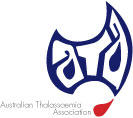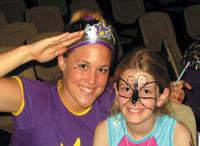
There has been recently much discussion on the potential benefits of wheat grass juice in relation to thalassaemia. The interest in wheatgrass juice has been instigated by a pilot study from India reporting significant benefit in some patients (RK Marwaha et al.Wheat grass juice reduces transfusion requirement in patients with b-thalassemia major: a pilot study. Indian Pediatrics 2004, in press). The original article should hopefully be published very soon. For anybody interested to look at the original article, it should become available through the website of the Indian Pediatrics journal (http://www.indianpediatrics.net/), as soon as it is published.
The study has involved 16 patients who satisfied the strict requirements of taking 100 ml of wheat grass extract every day for at least 18 months. Patients were monitored only by measuring the frequency and amount of blood transfused. In the course of the study 50% of the patients showed a reduction in blood consumption, with 3 of them showing a much stronger benefit. However, it is important to emphasise that all patients continue to be transfusion dependent. Unfortunately the paper does not include any information on the types of mutations found in these patients, or their iron chelation or whether the reduced consumption of blood was accompanied by an increase in fetal hemoglobin.
These are all important questions that need to be carefully documented, in order to helpus understand the mechanism by which some patients are deriving benefit and others are not responding. Prompted by this study, we hypothesised that wheat grass juice might be exerting its beneficial effect by increasing the production of fetal hemoglobin.
To address this question, we have recently examined in our lab whether wheat grass concentrate can increase the production of fetal hemoglobin. The method of our assay was published earlier this year (Human Molec Genet 13 (2004) 223-233. Vadolas J,Wardan H, Orford M, Williamson R and Ioannou PA. Stable cellular genomic reporter assays for screening and evaluation of inducers of fetal hemoglobin) and depends on using a sensitive fluorescent protein to detect production of fetal hemoglobin in human erythroleukaemic cell cultures.
The wheat grass concentrate we have used is of course prepared in a very different way from the wheat grass juice that was taken by patients in India. Nonetheless, we were very encouraged to see in our preliminary studies that wheatgrass concentrate has a significant effect on fetal hemoglobin production. I cannot say much more at this stage, except that we are planning to extend our studies to hopefully identify the factor(s) responsible for this induction.
I understand that wheat grass extract is already being promoted as an elixir for many diseases without any solid scientific evidence, so I want to caution people from rushing to buy it from natural product stores as an elixir for thalassaemia. We have no information which patients can respond to it and which patients may not benefit from it. Similarly, it is not possible to predict from the Indian study what dosage of wheat grass extract or concentrate may be most effective for those patients that could benefit from it.
Further studies are clearly necessary and warranted by these initial observations. It is only through careful and systematic studies that we will eventually get an effective therapy for this disease and not by patients experimenting individually without proper assessment.
In the meantime, we are also interested to examine any other natural products which may have beneficial effects on thalassaemia. We would therefore be pleased to hear from any patient who may have "experimented" with other natural products and noted a significant difference in their transfusion requirements.
Panos Ioannou (VIC)
Head, Cell & Gene Therapy
Research Group
Murdoch Childrens
Research Institute
Flemington Road,
VIC 3052Australia

















